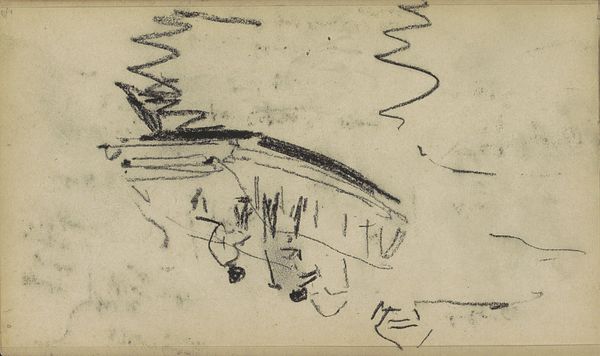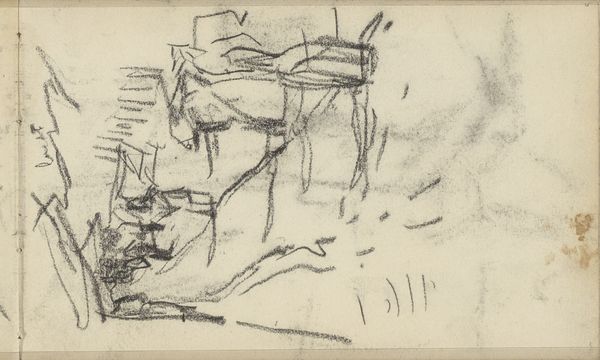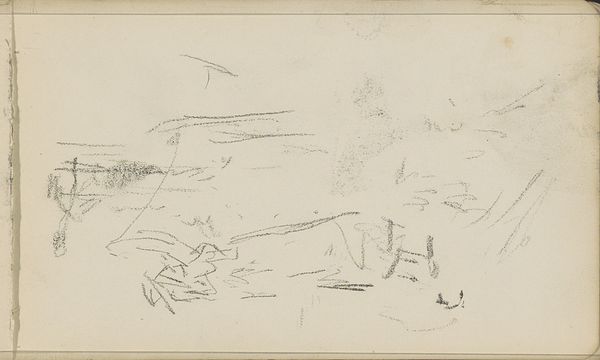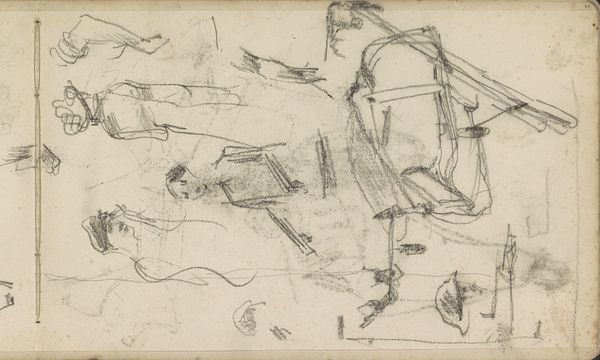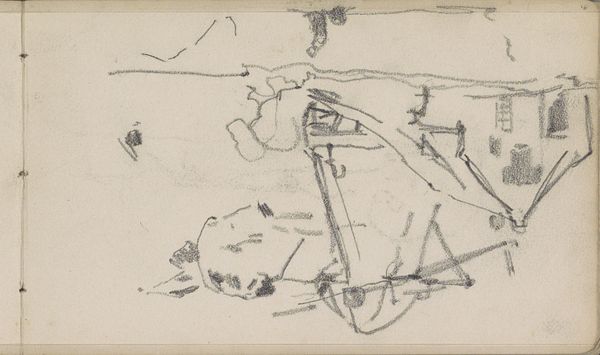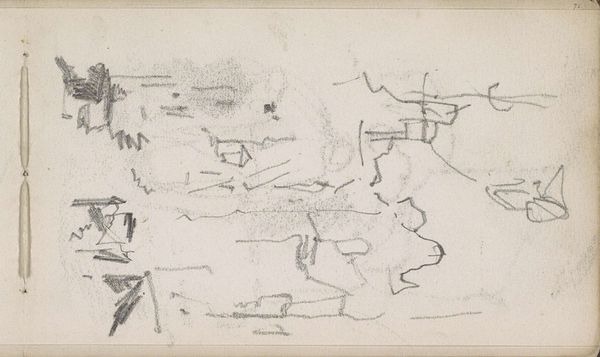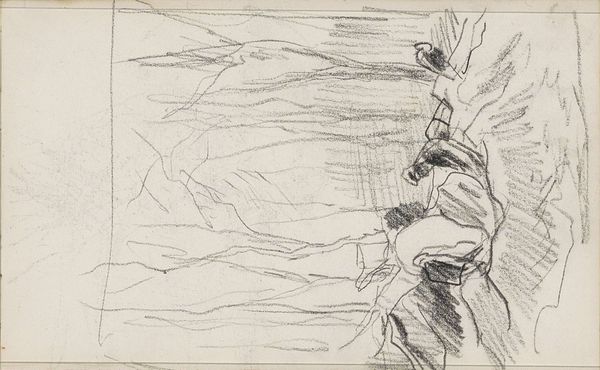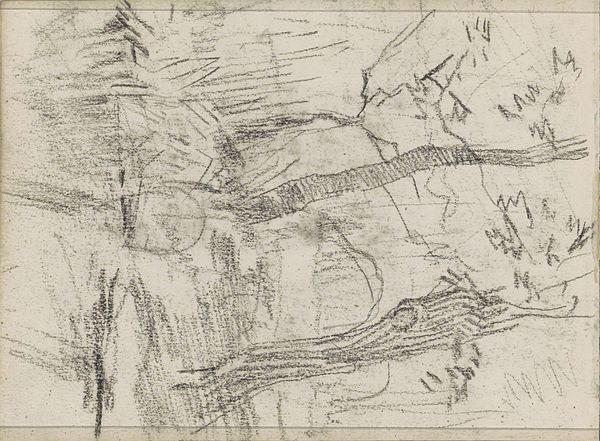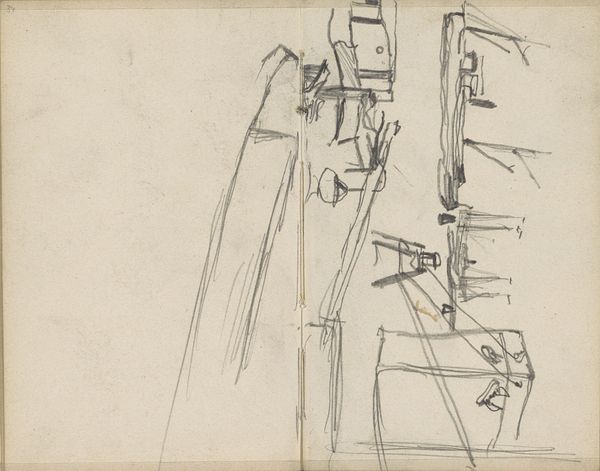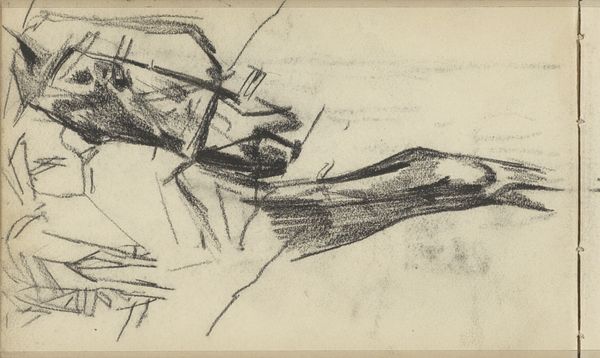
drawing, pencil, graphite
#
drawing
#
impressionism
#
landscape
#
pencil
#
horse
#
graphite
Copyright: Rijks Museum: Open Domain
Curator: Breitner's "Soldiers with Horses on a Path," made sometime between 1884 and 1886, greets us with a flurry of graphite marks, doesn’t it? You can see it here at the Rijksmuseum. Editor: It's raw. I see chaos. It's a war scene, yet it lacks a distinct narrative. It feels almost violently unfinished, a snapshot of disarray and suppressed violence. Curator: It's interesting that you say that, as the lack of finish can sometimes express the unfinished business of war itself. It looks more like a quickly jotted down observation than a detailed depiction, doesn't it? This medium is not typical of grand historical depictions, yet I cannot imagine a fully fleshed oil painting of soldiers being as effective at portraying war trauma. Editor: I am inclined to agree, however the symbolic weight given to military force and power often overshadows any message about trauma in historical contexts, I think. Curator: In some ways, the incompleteness speaks volumes. Look how he uses these sparse lines to imply weight and movement, the nervous energy almost jumps from the page. Even in the sketch, Breitner, like his contemporaries, explores how our connection to the equestrian form stretches far back in our symbolic understanding of power and status. Editor: Power at what cost, though? Given the time it was made, you know the Netherlands struggled under periods of foreign occupation for centuries. One questions, who is celebrated in this seemingly detached drawing, the occupier or the occupied? Curator: The image holds its silence there, doesn't it? In Breitner’s time, rapid industrialisation also brought unprecedented social change, maybe his intent with an image such as this was to grapple with shifts in power as much as a war itself. Editor: That is true. And this sketch, this immediate reaction, avoids any romanticism. It provides no heroism, no grand gestures. It presents war as disruption and maybe that is a radical move in and of itself, disrupting the very notion of war's visual legacy in collective memory. Curator: Perhaps the emotional punch in that incomplete quality and in graphite on paper, something we would hardly regard today as proper memorialisation material. Something so easily discarded. It adds to a compelling unease. Editor: Yes, it's as if Breitner asks us: how long will we, or can we, carry these burdens? Food for thought. Curator: Indeed, a potent, if unsettling, glimpse.
Comments
No comments
Be the first to comment and join the conversation on the ultimate creative platform.

